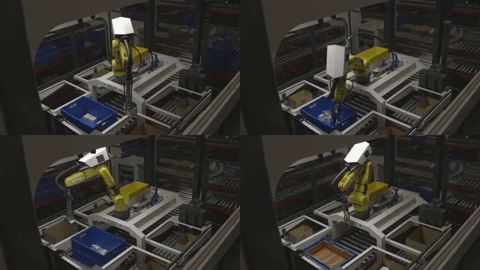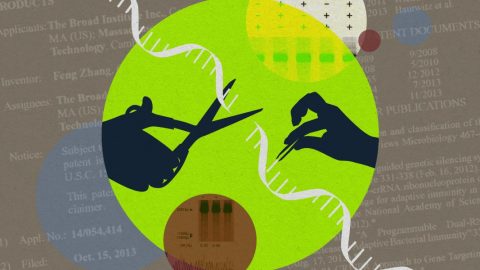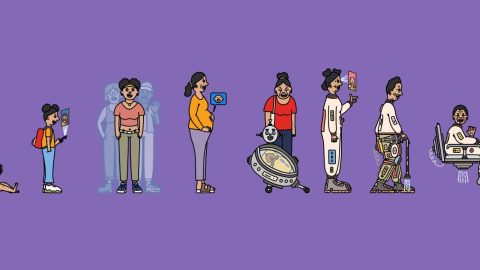As businesses look to get the greatest value from their data, investments in cloud infrastructure from customer relationship management (CRM) systems to email to points of sale can help make data more accessible and bolster innovation, says PwC principal in the analytics insights practice, Anil Nagaraj and Microsoft director of product management Azure Synapse Analytics and Power BI, Kim Manis.
Weighed down by legacy systems and rapidly increasing data volumes, many businesses have begun to migrate to cloud infrastructures to modernize their platform. According to Manis, the clearest benefits of moving to the cloud are speed and time to market as cloud platforms allow businesses to focus on core needs and customers rather than infrastructure and integration.
Although migration to the cloud can help businesses focus on their core competencies, making data accessible is key to becoming data-driven.
“The most important thing is building that data culture,” says Manis. “The people making decisions every day in your business actually use that data. So it doesn’t matter how much data you have or how many metrics are being tracked in some spreadsheets somewhere if nobody’s actually using it to make decisions.”
Industry-leading practices for strengthening data culture and real-time decision-making, says Nagaraj, include empowering teams across the enterprise with data, creating a culture of openness and transparency, and encouraging new innovations utilizing optimized data.
“I think we’ve got to break those barriers to make sure data is truly available to end business users through multiple experiences that you can bring about,” says Nagaraj.
Technologies like AI and machine learning can help enable new business innovations and improve data literacy without the intermediary help from data scientists. However, on top of maintaining interoperability between emerging technologies with cloud migration, businesses, especially those in the finance and healthcare sector, should also focus on data governance.
“I think it comes down to the data needs to be trusted in the first place and in the right structure in the first place for these AI capabilities to work,” says Manis. “No one is going to trust the new AI capabilities if they don’t trust the data. And that’s where the governance piece comes in.”
Looking forward, Nagaraj forecasts that cross-industry and cross-customer shared data can help enable critical decision making.
This episode of Business Lab is produced in association with PwC.
Full Transcript
Laurel Ruma: From MIT Technology Review, I’m Laurel Ruma and this is Business Lab, the show that helps business leaders make sense of new technologies coming out of the lab and into the marketplace.
Our topic today is cloud data modernization. As data silos break down and the flow of information opens, cloud computing becomes the key enabler between back and front office decision-making. Cloud-based data and analytic solutions can help spur innovation and enrich intelligence across the enterprise.
Two words for you: data powered.
My guests are Anil Nagaraj and Kim Manis. Anil is a principal in the analytics insights practice at PwC. Kim is the director of product management for Azure Synapse Analytics and Power BI at Microsoft.
This podcast is sponsored by PwC. Together, PwC and Microsoft help companies identify the business case for transformation. To learn more, visit pwc.com/us/microsoftanalytics.
Welcome, Kim and Anil.
Kim Manis: Thanks. Glad to be here.
Anil Nagaraj: Thank you. It’s great to be part of this podcast.
Laurel: So Anil, let’s start with you. Talking about cloud data modernization, could you describe what a migration to a cloud platform could look like? Say a typical business with lots of legacy systems and data and silo that’s moving to this modern platform to create real time insights and decision-making.
Anil: That’s a great question. In fact, many of our customers have a similar question as well. We’ve been talking to so many of them in similar lines. Let me break that down. Customers have been struggling with proliferated data across technologies for many years, they’ve gone through mergers and they were already in a big mess of how to leverage data for decision-making. And then there was this big wave of migration, not modernization, I would say, migration mainly focused on cost saves from expensive platforms on-premise or they were also triggered by some of the end-of-life scenarios for expensive on-premise MPP [massively parallel processing] systems, if you will. So the first wave of migration has already happened and customers have realized painfully that it’s really not solved business scenarios in terms of answering their questions, giving them capabilities around generating insights to further their business itself. And that’s where we are truly seeing a shift from migration to modernization as a journey itself.
Modernization truly looks at focusing on the business need, and we are in the midst of large finance supply chain operations, tax-related transformations with a digital data and analytic-centric approach. These transformation programs always have a backbone of a cloud platform like Microsoft Azure that helps in generating those real-time business benefits that we are truly helping our customers modernize towards. It answers business questions and the analytics ecosystem is trusted by business and it’s right sized by technology based on the need. That’s how I would put it. We’re moving from a migration approach to a modernization approach, from a business benefit perspective.
Laurel: And Kim, you’ve worked on all sorts of products from software to social networks to online retail. How can moving to the cloud help businesses and employees develop new products and encourage that kind of innovation?
Kim: It’s all about speed and time to market. For every company, you want to spend your time on your core competencies, you want to spend your time on your customers. You don’t want to spend your time on infrastructure or integration. So moving to the cloud really offers the ability to offload a bunch of the stuff that’s not core to your business and allows you to go faster, and allows you to try new things to get the latest and greatest innovations because the cloud is where all of that is coming. For me, I think the most obvious benefit here of the cloud is just speed and time to market.
Laurel: Anil was talking a bit more about that data and how messy it is and data silos, but also merger and acquisitions and other kind of business functions give enterprises this pool of data that may not be in the best shape that they want it. What happens there? How does that help the business actually get into a better place and get away from that kind of stuff, as you said is non-core to business?
Kim: Yeah. I mean, it’s all about being data-driven. And the most important thing here is building a data culture, is working with the data, is using the data. There’s a ton of data coming from every which way. You could track a billion metrics left and right, but if no one is using it, if a tree falls in a forest, does it make a sound? So the most important thing is building that data culture. The people making decisions every day in your business actually use that data. So it doesn’t matter how much data you have or how many metrics are being tracked in some spreadsheets somewhere if nobody’s actually using it to make decisions.
Laurel: And so building that data culture is just so important. But what are some of those things that are difficult that could be challenges to building that data culture to become data-driven?
Kim: I think a really hard part and an important part is making sure you agree on what those key metrics are to track, both agreeing on what they are and agreeing on what they’re not. You can also track thousand different metrics and that’s also not helpful. Making sure that everyone in the organization from top to bottom, from CEO to frontline worker, everybody knows what our goals are in terms of that data. And then again, they have access to it, and they have access to it where they’re getting their work done. I work on Power BI and one example is like we have mobile apps and we have a number of retail customers where there are people stocking the shelves in a retail business and they need to look at that data to understand, what should go on the top shelf versus the bottom shelf? When should I restock it? What time of day? What time of week? So all of these things that data needs to get used and needs to get used in context of where those decisions are being made.
Laurel: Anil, what do you think about this need for a culture change within an organization? What are some of those best practices for leaders who want to make their organizations more data-driven and that will then actually just strengthen that real time decision-making capability?
Anil: That’s a great question. Because we feel that culture change is not an after fact where IT has implemented a platform and then the business has to understand what the changes are and adapt to it. That’s not the approach we typically take at PwC. We follow a methodology called BXT, which is business, experience, and technology all coming together to deliver a unique experience. As part of our experience centers, we do workshops that bring in the business much earlier. When you’re envisioning a transformation program, it helps facilitate… to come out with some big rock ideas of how can you truly change the business, some design thinking sessions that can bring about innovation, as well as truly engage the business and tech teams ahead of time so that they plan together and they’re aware of all the changes that are coming through. And a big portion of it is enabling data literacy to the business teams.
How can you leverage data to make your most important decision? It can be very tactical, like Kim mentioned, on the shop floor. What insights can you get right to the shop floor, or can be a very strategic decision saying, how can you plan new products? How can you bring new innovation to your business itself? So from a best practices perspective, I want to call out three things. I think Kim mentioned this earlier: empowering teams with the data. Even now, we see large enterprises where organizations are siloed. It’s business units, it’s geographies split and shadow IT teams. I think we’ve got to break those barriers to make sure data is truly available to end business users through multiple experiences that you can bring about. But all keeping in mind certain regulations that are specific to certain industries as well. So financial services, health services, they are very regulated. We’ve got to keep those in mind. That’s the first thing I would call out, empower teams with the data.
Second one is to encourage a culture of transparency and openness. If somebody has done an experiment, they can host the data that they used and the algorithm that they used truly democratizing not just data, but also the analytic explosion of it as well so that all of it is common in a platform that others can leverage. That’s the second thing I would call. And lastly, we’ve got to encourage innovation because people are constrained with what data they have and they’re thinking from a business perspective, but if we open them up and enable them with not just data available in the enterprise, but external data that they cannot even think about. Whether data is becoming very common to use nowadays in terms of predicting supply chain, in terms of predicting for product procurement, and so on and so forth. So enabling that innovation thinking and that experimentation within the business in IT fosters a lot of data literacy, which you cannot imagine as well. So those are three big things I would say, empower teams with the data, encourage a culture of transparency, openness, and encourage innovation.
Laurel: Kim, how do those three things sound to you as a foundation of building that kind of data culture that allows companies to become better than they were, they are?
Kim: Absolutely agree, especially on the transparency front. Transparency with the data, letting people work with it, ask questions, form their own hypothesis, test things themselves, I think that’s key too because you’ve got to build that trust and some of that trust allows people to ask their own questions.
Laurel: As much as we need the business to become data literate, there’s something to be said also that the technologists have to become business literate as well and understand the business’s goals. How do you look at that equation of making sure everyone really understands the goals here?
Kim: Yeah. I mean, that’s key to anything you do with data is why. Why are you building it? Who in the business is going to use it? What decisions are they going to make with it? And that’s a question you want to ask early as possible in the process because, again, the technologist can go and work with all this data and put it in a pipeline data set for people to use. But if it’s not solving the business problems, if it’s not answering the business questions, it’s not serving its full purpose. So I think always grounding yourself in, what will I do with this data? What questions will I ask, and what decisions will I make if the numbers are going up or down?
Laurel: So we have data, now what though? How do technologies like AI and machine learning contribute to that move to cloud adoption? What are you seeing with your own clients? Some enterprises may be early in their stages, but others may be farther along.
Kim: Yeah. This is the really amazing thing about the cloud because once the data’s all there, amazing things can be done with it and innovation is happening like crazy. And we are seeing this now with everything happening with OpenAI and ChatGPT and all this. And in Power BI, we’ve shipped a bunch of AI capabilities in the platform. And an important aspect of the AI capabilities that have been really, really useful are the ones that business users can use. So things like natural language query where you can ask a question and get an answer as a chart, or a key influencer analysis where you can ask the system, “Hey, what’s influencing my cancellations? Which measures are influencing that?” And even with our latest AI feature, we actually use GPT-3 to generate code for business users to write measures in their dataset. So they can easily generate code to calculate year-over-year calculations or even more complex calculations just through natural language.
This really allows business users to dig into the data like they never have before and just to work with data and build that literacy that they never had before. And some of our biggest customers, there’s a retail company we work with where 40% of their users are using these features on a regular basis. So you have people who just used to open a report, get a number and move on. Now they can just do so much more with it and they can ask those questions themselves. Both it makes the business more efficient of course, because they don’t need data scientists doing this work. A business user can do it on their own, but man, it makes the business users, and the whole line of business, it opens up a whole set of possibilities that they never had before.
Laurel: And that’s a really great point. Anil, you don’t necessarily have to have data scientists to help with this kind of insights that you gained from the data. So you mentioned a number of back office operations like taxes and ERP or enterprise resource planning. So how else do you see people being empowered to make decisions and actually not just spend less time maybe in the depths of spreadsheets, but also then innovate and change the way that they offer goods and services?
Anil: Absolutely. That’s a great question. And Kim’s comment about OpenAI and ChatGPT bringing in a lot of differentiated thinking and capabilities, changing the roles itself of business users versus data scientists as part of it. How we look at some of the functional teams adopting these technologies is a multifold approach, correct? One, we see a close collaboration with the cloud service providers like Microsoft where that innovation and capabilities of AI, machine learning, for example, text mining. And simple things like text mining used to be a data science experiment before, we used to come out with a hypothesis, especially in health services. If somebody wants to take a stream of text and find out, “Hey, what’s a disease? What is a prescription, and what is a diagnosis?” All of that used to be a machine learning model that used to do it.
But Microsoft has open or applied AI capabilities, you can just send that stream of text and it’ll automatically give you output in terms of, “Hey, what’s a disease?” the categorization of disease versus symptom versus medication versus the doctor, out-of-the-box class classifies it for you. That’s a simple innovation, I’m not even talking about OpenAI or anything like that. If you got to use some of these capabilities, you’ve got to keep close touch with hyperscaler providers like Microsoft Azure who are pouring in a lot of investments into innovation and bringing these capabilities. And there are a lot of these tech forums. It can be a CDO [chief data officer] forum, it’s a tech innovation forum, it’s focus groups discussions that bring about innovative capabilities that can run on any hyperscaler. That’s another venue that we need to keep contact with. And one more thing I would say is tactically, when we are recommending architecture designed to customers, we recommend doing a very modular architecture so that the switch of capability becomes easier. For example, switching of OCR engines or language translations engines or a few examples where things are continuously maturing.
If you build your architecture in such a way that’s very modular, then that switch would be very easy as well. And ultimately it all boils down to a very diverse team that’s delivering these capabilities. Encouraging training, advanced training, and having that diverse skill mix of technology business like you talked about and mixing that up, obviously it brings new thinking to the team itself and thereby we’ll be able to adopt some of this innovation and capabilities that come out from the market itself. So that’s how I look at this impacting some of the large ERP or back-office transformations like operations or even tax. We can definitely use some of these capabilities there. For example, tax. For tax, there’s a whole big data stream that comes from unstructured data, it’s PDF documents, unformatted pieces of documents that we get, how do you make sense of it? There’s a whole big of AI capabilities that you can plug in that can bring the data into a structured format that regulators will believe as well. So quite a bit of impact from that.
Laurel: This gives a good example of what’s possible in the back office with so many operations now that the cloud platform hyperscalers like Microsoft Azure offer a number of these capabilities. How do companies then create interoperability opportunities between the cloud platform and the latest emerging technologies as well as staying really focused on data governance, especially for those highly regulated industries like finance and healthcare?
Anil: See, most enterprises have a good data governance set up where definitions are agreed on, and it is in the realm of regulations that that industry supports already. For example, if you look at the mortgage industry, somebody comes and asks you for a loan, there are certain elements of that customer, you can disclose to other parts of the organization, there are certain elements you cannot disclose. So that governance is well set up, from a data perspective. When it comes to applied AI services, Microsoft Azure and other platforms already take into consideration some of the ethical aspects of AI. What can we do with analytics from a prediction perspective? What can we not? So we’re covered from that standpoint.
The businesses need to be educated on the capabilities of the AI services. So those kinds of customers are already starting to integrate. When it comes to new capabilities that the market is bringing up, I think that’s where due diligence is required to make sure that the services are reliable. It’s proven as well as it aligns to some of your market regulations as well. So that’s why a lot of experimentation is needed with a lot of validation of the prediction models itself so that they prove certain scenarios and don’t deviate from the normal of ethics itself. So I’m sure Kim has certain perspectives as well. Kim, do you want to comment on that?
Kim: Yeah. I mean, I think it comes down to the data needs to be trusted in the first place and in the right structure in the first place for these AI capabilities to work. No one is going to trust the new AI capabilities if they don’t trust the data. And that’s where the governance piece comes in so much. So having a strong data culture, strong organization and ability to test the data. And back to that transparency point, really believe it, then you have a chance of believing in the AI that comes from it. So I think that continues to be the challenge no matter how advanced the capabilities are on top of it.
Laurel: So back to that whole idea that technology is easy, but people are difficult. So it comes back to culture, that is the main focus here. So Kim, to stay with you for a little bit, considering the next three to five years, what are you looking for in data and AI that’s just really exciting, and how all of this will create better experiences for people, whether it’s at work or at play?
Kim: Yeah. I mean, the thing that all these new AI innovations and moving to the cloud get you is really the opportunity for business users to do so much more. And this is where the idea of low-code comes in. Things that business users couldn’t have dreamed of doing a decade ago are now at their fingertips. And even when I think about the BI industry, 10 years ago, you had to file a ticket and somebody in the IT team would go and develop a report and maybe you’d get it a few months later. And then if you didn’t like it, you’d have to file a bug and somebody would fix the bug and it would take weeks. And now Power BI is this free tool, you can go download and any business user can connect to their data and build a report in minutes. So we’ve seen that change so much in the BI space alone of just how we’ve moved from all of this being behind a wall of a certain set of people that understand how to do things to literally anybody can take advantage of data and work with it.
And we’re just going to see that more and more over every industry. As we see AI just getting more advanced, those things that we thought were impossible except for a select view, it’s going to change, and it’s really exciting to see how companies change, how people’s careers change because of that innovation.
Laurel: Anil, what excites you in the next three to five years about data and cloud and innovation that’s possible?
Anil: I would say three to five years is a long time in tech. I think there’s more change coming sooner rather than later. OpenAI is going to be adopted very rapidly. We’ve already seen record numbers of adoption. I would say four things. One is that critical decision-making is going to be more shared data-based. When I say it’s shared data-based, it’s cross-industry, it’s cross-customer. People are sharing data with each other so that they can have better predictions in terms of who’s their buyer, what they are looking for, what their buying patterns look like. We’ve seen a bunch of financial services customers share data with retailers and vice versa as well, so that they can make each other intelligent. So critical decision-making is going to be based on shared data.
Second is data and AI are not going to be two things according to me, they’re going to be used interchangeably. There are no insights without data, there is no data without insights. So it’s always going to be, here’s a new insight that I found, not, here’s a new piece of data that could be useful for you. So data and AI will be used interchangeably. And then we are in the information age of a connected world. Everything is connected. IoT devices connected to governance, to unique experiences like marketplace, which will make data available at the fingertips, in your mobile device where we can run a model and so on and so forth. So it’s going to be a very connected world.
And the last one I would say is this virtual world. There’s a virtual world out there, which is on the metaverse, and that is going to be connected to the physical world. You could be playing a video game, look at a particular object that you want to buy, and you’ll be able to place an order for that object through a retail store, which would be connected to a real supply chain that can procure it for you and ship it to your house. So there’s a real connection between the physical world that could happen as an experience from your game to your professional life. So some pretty exciting things are coming down and all enabled through data and AI. So the next, not the three, five years, but the next couple of years are going to be very, very exciting, I think.
Laurel: Well, excellent place to leave off there. Anil and Kim, thank you so much for joining us today on the Business Lab.
Kim: It’s great to be here. Thanks.
Anil: It’s a pleasure to be here. Thank you.
Laurel: That was Anil Nagaraj from PwC and Kim Manis from Microsoft, who I spoke with from Cambridge, Massachusetts, the home of MIT and MIT Technology Review overlooking the Charles River.
That’s it for this episode of Business Lab. I’m your host, Laurel Ruma. I’m the global director of Insights, the custom publishing division of MIT Technology Review. We were founded in 1899 at the Massachusetts Institute of Technology, and you can find us in print on the web and at events each year around the world. For more information about us and the show, please check out our website at technologyreview.com.
This show is available wherever you get your podcasts. If you enjoyed this episode, we hope you’ll take a moment to rate and review us. Business Lab is a production of MIT Technology Review. This episode was produced by Giro Studios. Thanks for listening.
This content was produced by Insights, the custom content arm of MIT Technology Review. It was not written by MIT Technology Review’s editorial staff.









Recent Comments